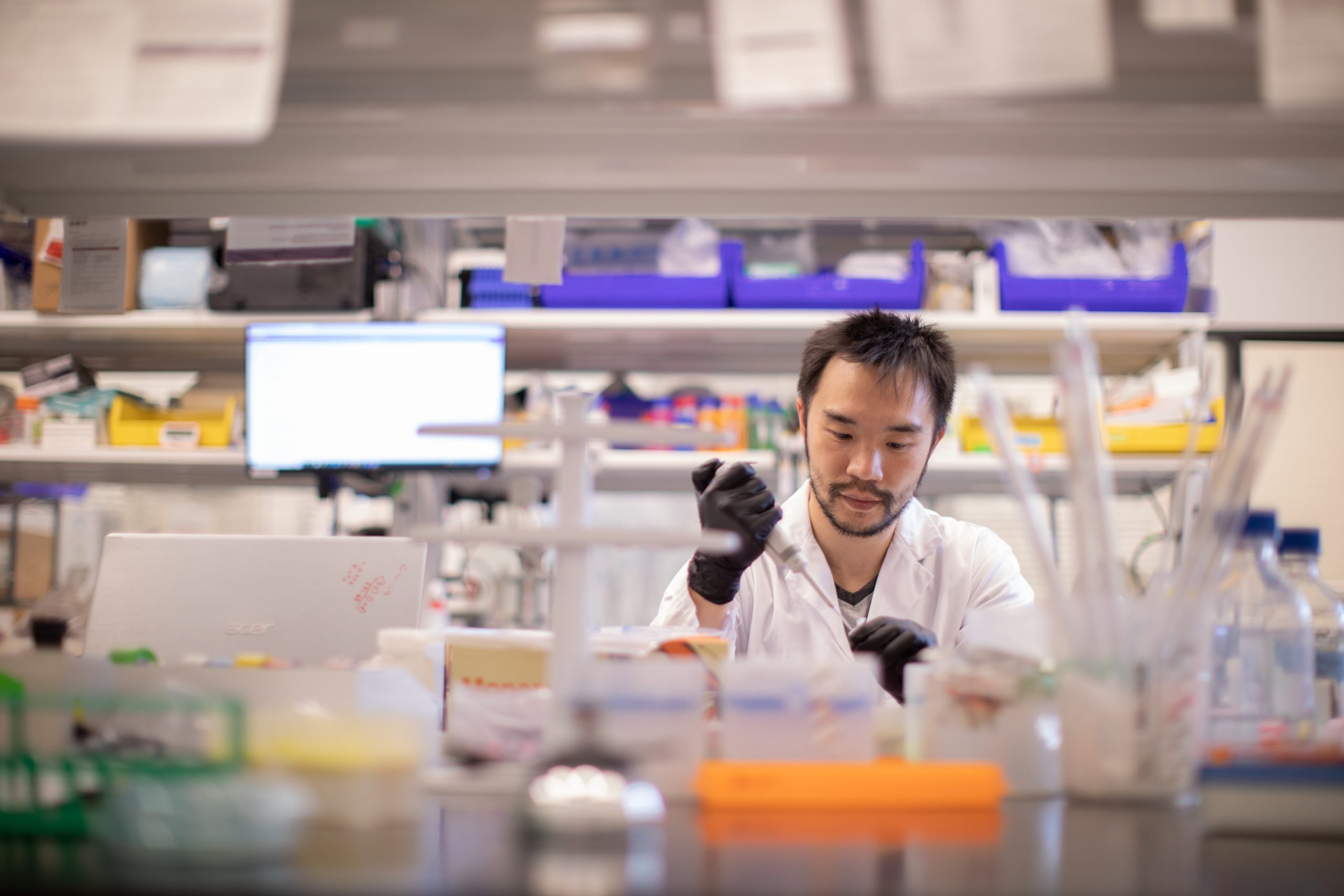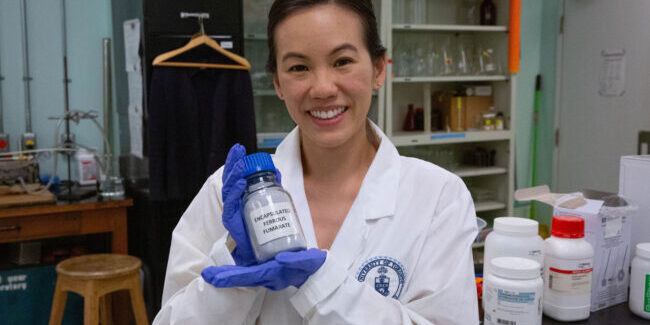U of T Engineering researchers have developed a new method to visualize tiny 3D structures made of human DNA that could advance research on a range of applications — including a potential vaccine for certain types of cancers.
Professor Leo Chou (BME), whose lab focuses on biomedical applications of DNA nanotechnology, set out to address the challenge of tracking these tiny structures when they are introduced into cells.
“Traditionally, researchers detect these structures in biological tissues by tagging them with fluorescent dyes,” says Chou. “We found this method to be poorly sensitive, and it can lead to dye-induced artefacts or errors.
“In contrast, our technique was able to detect DNA nanostructures with much higher sensitivity.”
Chou’s process, published in Nature Nanotechnology, is called OrigamiFISH. It references DNA origami, an approach that uses folded DNA to create two and three-dimensional shapes at the nanoscale, providing a versatile genetic engineering platform for a variety of applications, from nanofabrication to drug delivery systems.
The method also makes reference to fluorescence in-situ hybridization (FISH), which is an established technique used to visualize and label DNA sequences within cells.
The OrigamiFISH approach is an improvement on existing methods, presenting increased sensitivity, universal application, and a low detection limit — 10,000 times lower than field standards — making it a valuable tool for studying the behaviour of DNA origami in cells and tissues.
By allowing for the efficient and sensitive detection of single nanoparticles, the OrigamiFISH method aims to remove the cost or equipment-prohibitive entry barriers for DNA imaging. “We are now using this technique to visualize how different DNA nanoparticle designs traffic to specific tissues, such as lymph nodes,” says Chou. “Our interest is in applying this information to build effective vaccines and other drug delivery systems.”
Chou and his team develop DNA nanostructures that can serve as a platform to deliver instructions to a body’s immune cells in a way that would elicit an effective response towards a disease, such as cancer. These instructions could train the immune cells to recognize specific markers or structures that exist on the surface of cancerous cells — but not on healthy ones.
“We are all familiar with DNA as a genetic material, but we don’t often think of it as a ‘brick and mortar’ toolset in which to build molecular machineries,” says Chou. “Thanks to advances in genomics, there are now feasible pipelines to remove tumours from patients by identifying the unique parts of the cancer, or neoantigen.
“Our immune system has evolved to recognize specific structural and molecular patterns associated with pathogens. What we are trying to do is mimic these patterns on our synthetic DNA nanostructures for presentation to the immune system through vaccination.”
Chou believes the programmable and self-assembling nature of DNA nanotechnology also offers a plug-and-play approach in the manufacturing of vaccines and other therapies.
“DNA nanotechnology presents an opportunity to move away from a one-size-fits-all approach to immunization and treatment,” says Chou.
“We see big potential for more personalized treatment, such as customized vaccines tailored to the cancer or disease of an individual patient.”




